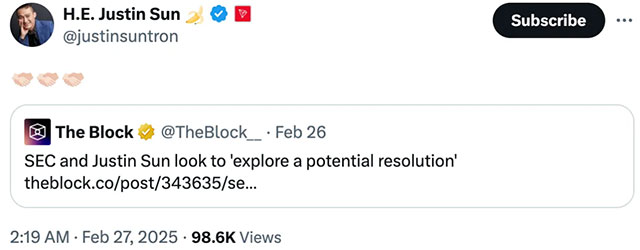The Reason Nobody Can Afford a Lawyer? It’s Lawyers.
One day about 10 years ago, Alicia Mitchell-Mercer experienced one of those moments that change the course of a person’s life. She was a longtime paralegal in Charlotte, North Carolina, working for a consulting company that helps law firms with project management. In the lobby of a client firm that day, she overheard a troubling conversation.
A receptionist was explaining the firm’s rates to a caller who was clearly in distress. Ray (a pseudonym) was a single father and fast-food manager with three girls between the ages of 7 and 12. His estranged common-law wife, struggling with addiction, had moved in with a man who’d done prison time. Ray had heard she was planning to leave town with him and take the kids, and he was desperate to prevent it. Despite the urgency of his situation, the receptionist was telling Ray the firm would be unable to help—he couldn’t afford their fees.
Mitchell-Mercer reached out to Ray. It turned out he’d already been to the sheriff’s office and had consulted with a court advocate. Both said he needed an emergency custody order—and a lawyer. She knew how to help him, but she couldn’t do it on her own. Laws in all 50 states forbid what’s known as “unauthorized practice of law.” UPL statutes generally preclude the provision of legal services by nonlawyers, even old hands like Mitchell-Mercer, who, in addition to her decades as a paralegal, has served in state and national legal organizations and volunteered as a court-appointed child guardian.
For Ray, she found a workaround. On her own time, she ghostwrote a complaint and had an attorney she knew review it. Ray filed the complaint as an unrepresented litigant and got his emergency order. But by the time his daughters were located, several weeks after Mitchell-Mercer reached out, the girls were living in another state and said they’d been assaulted and sexually abused. Mitchell-Mercer dreads to imagine how much worse things might have been had she not intervened. “This man had gone to everyone under the sun to try and get help and wasn’t able to,” she said. “That was one of the first times I realized how broken things were.”
With that realization, she would soon find herself drawn into an unusual coalition of left-leaning academics, grassroots activists, and libertarian lawyers, all striving to democratize civil legal services by suing states, including her own, to roll back their UPL laws. Strange bedfellows, to be sure, but their timing is impeccable. As the pendulum swings in favor of deregulation, even some progressive politicians and traditional fans of zealous government oversight have cast a skeptical eye on overbearing restrictions, like the zoning and environmental codes that are thwarting construction of desperately needed housing and clean energy projects.
Depending on whom you ask, if Mitchell-Mercer and her allies can put their arguments before the Supreme Court, they could either smash barriers that have left millions of Americans helpless against abusive partners, bad landlords, and heartless corporations or usher in a bonanza of poverty predation—or both. Either way, their efforts have the potential to change the legal landscape profoundly.
The failings of America’s criminal justice system are common knowledge, but our civil legal system, which affects even more people, is no less compromised—and there’s no civil equivalent to the Sixth Amendment’s right to counsel in criminal cases. A 2022 report from the Legal Services Corporation (LSC), a nonprofit that Congress established during the 1970s to fund free civil legal aid for the poor, notes that “low-income Americans do not get any or enough legal help for 92 percent of their substantial civil legal problems.”
More than 70 percent of low-income families encounter at least one such issue a year, the LSC reports. As in Ray’s case, these are often true emergencies—domestic violence, eviction, predatory debt collection—with life-altering stakes. A 2018 study found, for example, that tenants facing eviction in the Minneapolis area were four to five times more likely to be forcibly removed from their home if they lacked legal representation. But lawyers charge around $300 an hour on average, putting their services out of reach for even much of the middle class.
State legal aid organizations, meanwhile, are independent nonprofits and, despite some government support, are badly underfunded. In Mitchell-Mercer’s home state, there is only one Legal Aid attorney for every 8,000 eligible people—those with annual household income of no more than $39,000 for a family of four (125 percent of the federal poverty level). The National Center for Access to Justice ranked North Carolina the third-worst state for access to civil attorneys—only Mississippi and South Dakota scored lower. About half of its counties are legal deserts, with fewer than one lawyer per 1,000 residents.
This dearth of affordable representation affects communities of color disproportionately, and Mitchell-Mercer, who is Black, is regularly approached by members of her church. A woman needs assistance getting a restraining order. A family facing eviction doesn’t know how to respond to court papers. The immediate solutions are often straightforward—a matter of properly filing standard legal documents—and well within her realm of expertise. But even such minimal assistance is verboten.
In theory, the UPL laws are in the public interest—conceived, in part, to protect people from predatory charlatans and incompetent practitioners. But they’re also the primary mechanism by which lawyers maintain their monopoly on legal advice. Even as Americans have grown used to receiving basic medical care from physician assistants and nurse practitioners—including diagnoses, treatment, and prescriptions—UPL rules ensure that no equivalents exist for legal services. Most of the statutes are extremely broad, encompassing everything from giving legal advice to drafting documents and appearing in court. They are vigilantly policed by the state bars, and violating them exposes nonlawyers like Mitchell-Mercer to sanctions, even including jail time. Which is why, when someone comes to her for help, there’s often little she can do.
To a degree unmatched by other professions, American law is a self-governing fiefdom. There are no federal rules for lawyers. Officially, state supreme courts act as industry overseers, but as a practical matter, regulation is largely delegated to state bars. These are the licensing bodies that lawyers join upon passing the bar exam, as opposed to bar associations, which are professional groups. State bars determine not only who may practice law but what constitutes that practice—including tasks that people without a law degree are quite capable of handling.
Stanford law professor Nora Freeman Engstrom and researcher James Stone trace the current regime back to the 1930s, when bar associations launched a fusillade of litigation against unions, homeowners associations, and auto clubs that provided legal services to members, accusing them of violating incipient UPL laws. “In state after state,” Engstrom and Stone wrote in the Yale Law Journal, the bar associations prevailed, eliminating competition and decimating “a once-thriving system for the provision of group legal services to ordinary Americans.”
The industry’s evolution over the past half-century has only made access to lawyers more exclusive, said James Sandman, a Penn Law School lecturer and former LSC president. In 1973, less than half of law firm revenue came from corporate clients, as opposed to individuals; by 2023, the figure was nearly 75 percent. “They’re going after the clients that can afford to pay,” Sandman said. “Individuals who don’t have lawyers have to navigate an unbelievably complicated, opaque system designed by lawyers for lawyers.” He continued, “But the image people have of what goes on in a courtroom, where both parties have lawyers arguing facts on behalf of their clients, is a fiction in more than three-quarters of civil cases.”
“I’m not going to jail for you or anybody else,” says a social worker who helps with visitation and custody issues at a free legal clinic. “People say, ‘What would you do?’ Well, I can’t tell you.”
The legal industry fiercely resists incursions onto its turf. In response to a 2008 proposal to loosen UPL restrictions in Washington, the state bar association claimed the move would create “second class, separate but unequal, justice” and deprive less-affluent lawyers of work. The North Carolina bar issued a cease-and-desist letter that year to LegalZoom, saying the tech firm’s document-creation service violated UPL law. (The company, which has faced similar challenges elsewhere—most recently in New Jersey—then sued the North Carolina bar and later settled, agreeing to have lawyers vet all of its documents.)
Meanwhile, a 2015 proposal to relax California’s UPL rules would, one foe argued, be “detrimental to the honest attorneys who are trying to make a living.” But the image of a general-practice lawyer hanging a shingle on Main Street is largely a relic of the past. Today’s median lawyerly income is roughly $150,000, and law is increasingly a business of corporate specialists. From 2013 to 2023, the number of lawyers working at firms that have more than 500 attorneys increased by 36 percent.
The bar’s proposed solutions to the affordability crisis—increasing legal aid funding and expanding pro bono requirements—are woefully inadequate. “Providing even one hour of attorney time to every American household facing a legal problem would cost on the order of $40 billion,” legal scholars Gillian Hadfield and Deborah Rhode wrote in 2016—almost 30 times the overall legal aid expenditures in 2013. To provide even this minimal level of counsel, they calculated, every licensed attorney in the United States would have to clock more than 200 pro bono hours a year.
To make a dent in the problem, legal aid organizations would need a massive increase in support. Last year, Congress approved only $560 million for the Legal Services Corporation, about a third of its budget request. And even if LSC were fully funded, lots of low-income litigants would be stuck on the sidelines. Those who are ineligible for financial or other reasons, and who can’t find other pro bono legal help, are left to navigate a patchwork of free clinics and courthouse services that vary greatly in quantity and quality. Concentrated in urban areas, these clinics are generally staffed by nonlawyers who cannot offer clients any actual legal advice.

Daniel Stolle
On a recent morning at a courthouse in downtown Raleigh, employees of the Wake County Legal Support Center were helping people fill out standard forms and offering instructions on how to serve court papers. The center, one of the few of its kind in North Carolina, opened in January 2023. A local judge had estimated that 2,000 people might use it each year. In 2024, it served almost 14,000.
Seated at a long plastic table, a court advocate who specializes in domestic violence issues was especially busy. “Does she have a concealed carry permit?” she asked a bearded Black man in an orange construction shirt and mud-caked boots. The man shook his head. He was filing for an emergency protective order against his partner for himself and his child. Still, he said, “she could tweak out at any moment.” He left the center visibly relieved, an envelope of completed forms tucked under his arm. But the two young women who came next couldn’t decide how to proceed. They wanted the advocate to advise them, but she wasn’t allowed. Both left empty-handed.
This happens all the time, Norma Boyd, who was sitting at an adjacent table, told me. Boyd, a veteran social worker whom everyone calls Ms. Norma, handles questions about child custody and visitation. Often, she said, people have difficulty understanding basic legal terms. “I ask, ‘Are you the plaintiff or the defendant?’ They don’t know.” Even if they file initial paperwork, their cases are frequently dismissed when, without further guidance, they miss follow-up steps such as serving documents and filing certificates of service. For people without an attorney, the courtroom is an intensely frustrating, alienating place. “I felt like this street rat showing up to a cocktail party uninvited, and everybody knows what’s going on except me,” one North Carolinian who’d represented himself in a custody trial against a lawyered-up former partner told me.
Boyd, with her proximity to family law, often knows perfectly well what the center’s clients ought to do. But “I’m not going to jail for you or anybody else,” she said. “People say, ‘What would you do?’ Well, I can’t tell you. I tell people, ‘These are your options.’ People want you to tell them what to do, and I can’t.”
Mitchell-Mercer’s quest to reform the system took shape in 2020, when she and another paralegal, S.M. Kernodle-Hodges, founded a nonprofit called the North Carolina Justice for All Project. They were inspired by policy changes in a handful of other states, notably Arizona, Utah, and Washington, that permit nonlawyers who’ve undergone special licensing programs to provide limited legal assistance. In Utah, they can work on family law matters, including domestic abuse, child custody, and divorce, plus eviction and debt collection cases. In Arizona, they can handle certain criminal and juvenile law issues. In both states, they can give advice; review, draft, sign, and file documents; and accompany clients to court. (Similar programs are now under consideration in about a half-dozen other states.)
Kernodle-Hodges, a former deputy sheriff who calls everyone by their last name—she goes by “Kernodle”—had been thinking about bringing such a program to North Carolina. On a colleague’s recommendation, she reached out to Mitchell-Mercer, who had served a stint in the Army and written her master’s thesis on legal services.
They proved a good fit. Kernodle, too, is Black and a court advocate. Both women are extraordinarily disciplined and scheduled to the hilt with professional and volunteer obligations. Both have a precise, punctuated way of speaking and a kind of regal poise.
In January 2021, they proposed a program comparable to those in Arizona and Utah to the North Carolina bar. At more than 100 pages, their plan was deeply researched, with rigorous citations. The bar’s Subcommittee Studying Regulatory Change, of which Mitchell-Mercer and Kernodle were members, held a series of meetings and hosted outside experts to vet the proposal.
“When you have this many disparate parties involved, the Supreme Court is going to have to resolve it…It’s going to be one of the first big economic regulation cases of our era.”
In January 2022, the subcommittee issued a report fully endorsing it. But the authors weren’t convinced they would get a fair shake. “What we were hearing was that there was some hesitancy to move forward,” Mitchell-Mercer recalled. “Our ideas were getting explained to other bar committees, and not necessarily being well received.”
Indeed, the bar went on to create another subgroup, supposedly to address the access question, from which the two women were excluded. When that committee first met, in October 2022, they posted a message to the Justice for All Project’s website: “We are concerned that this new committee was formed solely to appear that state bar leaders are doing something about the access to justice crisis and to appear empathetic to the plight of North Carolinians,” they wrote. And “there is reasonable concern that North Carolina State Bar officers have no serious intention of acting on previously discussed initiatives.”
A prominent lawyer sympathetic to Kernodle and Mitchell-Mercer told them that bar leaders were describing them as “angry and aggressive,” an offensive stereotype. Mitchell-Mercer tried to take it in stride. Kernodle was upset. “Mercer is a look-at-the-bright-side person,” Kernodle explained. “She will give you the very proper language about everything. My thing is: What’d you say?!” But they had been careful not to frame their proposal in racial terms. “No matter how cordial we were, it was still upsetting to them,” Kernodle said.
The bar took no further action, in any case. And so, in 2023, the women submitted a similar proposal to the state legislature, backed by more than a dozen legal entities, including the US Department of Justice, whose antitrust division commended their “thoughtful analysis and policy recommendations and looks forward to reviewing any related bills that ultimately are introduced to the North Carolina legislature.”
None were forthcoming. Kernodle and Mitchell-Mercer had encouraging talks with several lawmakers, but their proposal, which asserted that UPL laws gave attorneys “no meaningful incentive to provide affordable services,” clearly ruffled some feathers.
Amy Galey, a Republican state senator and an attorney, sent the women a blistering email that March, copying her Republican colleagues: “So you want to create a two-tiered system of legal representation, one of well-educated licensed lawyers for people who can afford them, and a second tier of unlicensed, unregulated people of questionable education for low income people,” she wrote. “If your response would be no, they would be licensed, and we would regulate them, and they would be required to have a certain education—yes we have that already, and they are called attorneys.” She went on: “Your proposal would create an A-team and a B-team…and ultimately solve nothing.” Asked for further comment, Galey replied, “That’s a really good quote, glad I said it, and I don’t have anything to add.”
Her message effectively ended the discussion. Kernodle and Mitchell-Mercer heard nothing more from the legislature.
Even as they contemplated defeat, the women were introduced to an unexpected ally, Paul Sherman, a senior attorney with the Institute for Justice, an influential libertarian public-interest law firm. Founded in 1991 as a nonprofit with a $350,000 grant from Charles Koch’s foundation, the IJ now spends about $44 million a year, much of it litigating in federal courts to “protect the constitutional rights of Americans” against what its funders and principals view as regulatory overreach.
Professional licensing laws are among the firm’s favorite targets. In Louisiana, Florida, Kentucky, and elsewhere, the IJ has successfully challenged what it argued were onerous licensing laws for engineers, diet coaches, florists, and tour guides. Since the late 2000s, it has increasingly framed professional licensing as a violation of the First Amendment, relying on a series of Supreme Court decisions that eroded the right to limit certain kinds of speech.
In one 2015 case, Reed v. Town of Gilbert, the court held that an Arizona town’s attempts to restrict public signage based on its content were unconstitutional. In another, National Institute of Family and Life Advocates v. Becerra, in 2018, the justices rejected the idea that professional speech and commercial speech enjoy less protection than personal speech. “There’s never been a better time in American history to be litigating free speech cases,” Sherman told me. “The court has adopted a more or less libertarian interpretation of the speech clauses of the First Amendment.”
Without adequate guardrails, “there can be consumer fraud. There can be a whole variety of issues…We need to be focused on: What’s good for the public?”
In January 2024, Sherman filed a First Amendment lawsuit on behalf of the Justice for All Project that challenges the scope of North Carolina’s UPL prohibitions. Naming five local district attorneys and the president of the state bar as defendants, it builds on the IJ’s suit against New York state—where the firm represents a pastor and a legal-tech nonprofit called Upsolve, arguing that they should be able to advise clients battling debt collectors—and a similar case brought by the NAACP in South Carolina that centered on eviction. The Upsolve case is under review by the 2nd Circuit after a lower court issued a preliminary injunction in the nonprofit’s favor, and the South Carolina Supreme Court has granted the NAACP permission to train nonlawyers to provide eviction-related advice.
But the North Carolina claims are substantially broader, asserting the right of nonlawyers to advise clients on a spectrum of issues and charge for their services. This is by design. “The goal is for the Supreme Court to make clear that advice, no matter what the topic, is protected by the First Amendment,” Sherman said.
Legal experts figure this case, or a similar one, has a good shot at getting in front of the high court, and soon. “It’s not going to stop in North Carolina,” said Lucy Ricca, executive director of the Deborah L. Rhode Center on the Legal Profession at Stanford. “These cases have the potential to blow through” the political morass. “When you have this many disparate parties involved, the Supreme Court is going to have to resolve it,” concurred Dan Rodriguez, a professor at Northwestern Law School. “It’s going to be one of the first big economic regulation cases of our era.”
Sherman acknowledges that taking on the bar is, well, a high bar. “We tried to think of occupations that are composed largely of speech, and of course, one of the first that occurred to us was our own: the practice of law,” he said, but “before we could challenge that system, we had to have some victories involving other occupations to establish the legal principles in a setting that would be less scary to judges.”
He now believes the Institute for Justice has the precedents it needs. It doesn’t hurt that at least one Supreme Court justice has expressed displeasure with the status quo. Lawyers “have used the expansive UPL rules they’ve sought and won to combat competition from outsiders seeking to provide routine but arguably ‘legal’ services at low or no cost to consumers,” Neil Gorsuch wrote in a 2016 article. “It seems well past time to reconsider our sweeping UPL prohibitions.”
A Supreme Court ruling favoring the IJ in the North Carolina case could greatly expand access to civil justice for the people whom Mitchell-Mercer and Kernodle aim to help. But even some access-to-justice proponents are wary. If you wipe out all restrictions on providing legal advice, “there’s no logical stopping place,” Northwestern’s Rodriguez told me. That’s part of why more than a dozen civil legal services and rights groups in New York oppose the IJ’s suit there, including Legal Services NYC, the nation’s largest provider of free civil legal assistance.
“When we started making these arguments, people laughed at the idea that the First Amendment could apply to professional speech…People aren’t laughing at these arguments anymore.”
“Plaintiffs would immediately relegate low-income New Yorkers, including low-income New Yorkers of color, to receiving questionable legal advice,” the groups wrote in an amicus brief. “The consequences,” they argue, “can be disastrous.” Incompetent legal guidance could pave the way for “creditors and debt collectors to secure an unaffordable settlement agreement or an easy judgment that they can then use to freeze bank accounts and garnish wages.” Critics also fear that artificial intelligence would unleash a firehose of dubious counsel.
Without adequate guardrails, “there can be consumer fraud. There can be a whole variety of issues,” Andrew Perlman, the dean of Suffolk University Law School, told me. It’s not hard to imagine entrepreneurs akin to payday lenders and skeezy tax preparers opening outlets in low-income neighborhoods to peddle legal help. “We need to be focused on: What’s good for the public?” Perlman said.
The fact that Sherman’s group takes money from dynasties like the Kochs and the DeVoses doesn’t exactly ease liberals’ concerns. “Open their books and it’s a cornucopia of ProPublica’s worst nightmares!” Rodriguez quipped. “There are going to be people drafting on these sympathetic plaintiffs, looking for economic advantage. You think you’re protecting access to justice, but actually, you’re feeding the Koch brothers’ wildest fever dreams!”
Hadfield, who teaches at Johns Hopkins University and is an influential voice on the access issue, is skeptical of the First Amendment framing. “I don’t think that [just] anybody should be able to say anything to anybody about legal matters,” she told me, and merely empowering competent nonlawyers to provide advice isn’t enough, given the scope of the problem. She dreams of a future in which large nonprofits and businesses harness technology, including AI, to furnish reliable, ethical, low-cost legal assistance on a massive scale.
Many academics who study civil legal access share a similar vision. You could have Amazon get in on the act, and also retailers like Walmart, whose customers might one day obtain a simple will or even a divorce while picking up their prescriptions. “We’re worried about the impact of these companies in communities, but they’re also just better at serving consumers than lawyers are,” said Stanford’s Ricca. “Lawyers think we’re really, really special—a privileged class. But we’re just not serving regular people anymore.”
Qualms aside, Hadfield does hope the First Amendment cases succeed, “because we need to break open a very, very harmful set of practices: this stranglehold that the legal bar has.” There’s no evidence that litigants have been harmed in the states that have relaxed UPL rules, she added—and a scorched-earth approach may well be a necessary first step in creating a more equitable and thoughtfully regulated industry.
The Justice for All Project hit a snag in December, when a federal judge dismissed its case. The court ruled that North Carolina’s UPL statutes regulate “conduct”—the practice of law—with only “an incidental impact on speech,” and thus do not violate the First Amendment. The decision relied, in part, on a recent appellate ruling against another IJ client, a drone photography company that North Carolina targeted for the “unlicensed practice of land surveying.” The December ruling is “disappointing but not surprising,” Sherman told me, arguing that both decisions clearly misapply Supreme Court precedent.
He is appealing the Justice for All case while the high court considers whether to review the drone case. For Sherman, both losses are merely temporary setbacks: “We’ve been litigating these cases for 15 years. What’s amazing is when we started making these arguments, people laughed at the idea that the First Amendment could apply to professional speech. The Supreme Court agreed with us. People aren’t laughing at these arguments anymore.”
Mitchell-Mercer, too, was skeptical of Sherman’s strategy at first. “I had never thought of this as a First Amendment issue,” she told me. But she’s come around, even adopting some of the language of her libertarian allies. “People should be trusted to know that they’re gonna get what they pay for,” she said. “Prohibiting people from even having a conversation is almost a weaponizing of paternalism. Telling people that we’re going to control who you can talk to about your issue, who you can hear from, is not benefiting the public. It benefits the lawyers.”
Continue Reading…






